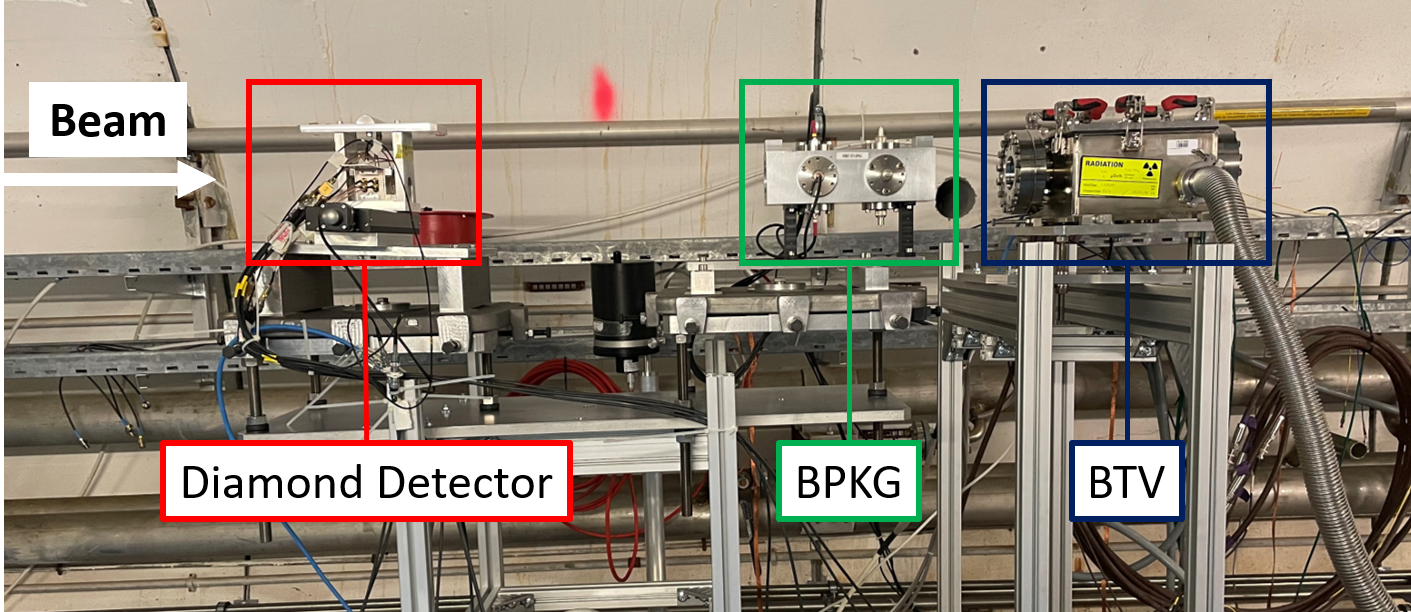
HiRadMat has a permanent beam diagnostic installation consisting of a diamond detector, beam television and beam position assembly in front of the experimental test stands. These beam diagnostics can measure various beam parameters on-line for each extracted pulse with all data subsequently stored within CERN’s Accelerator Logging Service (NXCALS). The data can be accessed, visualized and extracted using the Timber interface. The beam parameters include the beam intensity, its position and spatial intensity distribution.
Beam Intensity
The integrated beam intensity is measured by a set of Beam Current Transformers (BCT) within the SPS. Another BCT within the HiRadMat extraction beam line (TT66) evaluates successful extraction towards the target area. The absolute measurement of this BCT can be distorted by secondary particles produced by the beam interacting with the experiment or the HiRadMat beam dump. The transmission from SPS to HiRadMat is evaluated regularly and losses have been deemed negligible.
Additionally, a beam pickup monitor (BPKG) and a diamond detector can measure the bunch-to-bunch intensity and time structure of an extracted pulse.
Beam Profile
The spatial intensity distribution (beam profile) of each pulse is measured by a Beam Television (BTV) monitor that covers the whole intensity range available at HiRadMat. The BTV measures both the beam profile with its horizontal and vertical distribution and additionally the position of the beam. Together with the known optics of the beamline the actual beam profile at the position of an experiment can be accurately determined.
Beam Position
Both the BTV and the BPKG can provide the position of the beam with respect to the ideal beam axis. Together with metrology and survey experiments have achieved a spatial accuracy below 0.1 mm.
